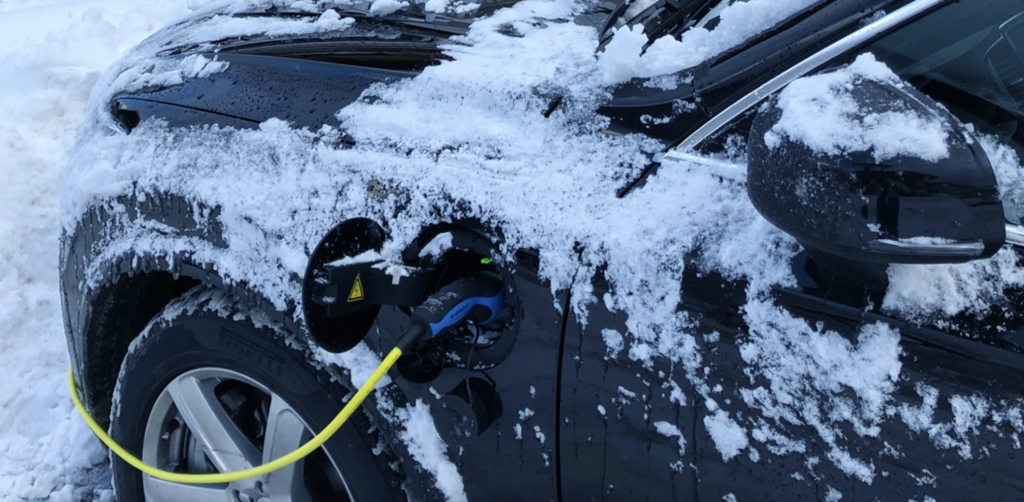The charging speed of an electric vehicle (EV) can be influenced by several factors. Here are six things that can affect the charging speed of your EV:
Charging Infrastructure

The type and capacity of the charging infrastructure you use will significantly impact the charging speed. EVs can be charged using different levels of chargers, such as Level 1 (120V), Level 2 (240V), and DC fast chargers. Level 1 chargers provide the slowest charging speeds, while Level 2 and DC fast chargers offer higher charging rates.
How full your battery is when you start charging is called “State of Charge“

Your State of Charge(SoC) describes how full your battery is, in terms of percentage. Think of it like a fuel gauge. Batteries charge fastest when they are nearly empty.
The charging rate of an electric vehicle (EV) can vary depending on the state of charge (SoC) of its battery. Generally, the charging rate is highest when the battery is at a low SoC and gradually decreases as it reaches a higher SoC. This behavior is often referred to as the charging curve or charging taper.
Here’s a breakdown of how the charging rate can change based on the state of charge:
- Low-SoC (0-20%): When the battery is at a low SoC, the charging rate is typically at its maximum. EVs can charge at their highest power levels during this phase, allowing for rapid charging speeds. It’s not uncommon to see charging rates of several hundred kilowatts during this stage.
- Mid-SoC (20-80%): As the battery SoC increases, the charging rate tends to taper off. The charging power gradually decreases to protect the battery’s health and ensure its longevity. This tapering is often observed to maintain temperature control, prevent overheating, and avoid excessive wear on the battery. However, charging rates during this phase can still be quite high, typically ranging from tens to a few hundred kilowatts.
- High-SoC (80-100%): When the battery approaches a high SoC, the charging rate slows down significantly. This is to prevent overcharging, which can strain the battery and potentially cause damage. The charging power is reduced further, and the charging rate becomes much slower compared to the earlier stages. In some cases, the charging rate may drop to a few kilowatts or even lower.
Charging Power and Vehicle’s Onboard Charger

The charging power your EV can accept and the capacity of its onboard charger play a crucial role in determining the charging speed. Higher power charging stations require compatible vehicles with higher onboard charger capacities to take advantage of faster charging rates. The charging power is typically measured in kilowatts (kW).
Temperature

The ambient temperature and battery temperature impact the charging speed. Extreme cold or hot temperatures can reduce the efficiency of the charging process and slow down the charging speed. Some EVs have battery temperature management systems to optimize charging speed and protect the battery from temperature-related issues.
The reason has to do with protecting your battery’s health. Your EV has something called a Battery Management System (BMS) to keep an eye on your battery’s safety. It’s sort of like your battery’s brain. Your EV’s BMS doesn’t want the battery to get too hot or start charging too fast when it is too cold because extreme temperatures can impact a battery’s lifespan.
Most EVs also have what is known as a thermal management system, which can heat or cool the battery to keep it at optimum temperature. Still, EV batteries are influenced by the outside weather. If it’s a really hot day outside (or if you’ve been charging for a while, and your battery is getting hotter), your charging speeds will be slower. If it’s freezing cold outside, your charging speeds will also be slower. These speeds are decided by your BMS, which controls the thermal management system for a fast but safe charge.
Battery Age and Degradation
As an EV’s battery ages, its charging speed may be affected. Battery degradation over time can reduce the battery’s capacity and its ability to accept a charge at the same speed as when it was new. Although it takes time, batteries can deteriorate and lose their charging capacity over their lifespan. Because every EV is different, the normal loss of your battery’s capacity should be defined in your vehicle’s warranty. As a general rule of thumb, when fast charging, it’s a good idea to end the charge around 80-85% SoC. This will keep your battery from getting too hot—and give you more free time (since charging speeds will be much slower as your battery is close to full).
Other loads in use while charging

If you stay in your car during fast charging, be aware that some of the energy destined for your battery is diverted for loads such as cabin air conditioning or heating, lights, radio, and other accessories. The thermal management system also uses some of the charging power to heat or cool the battery. This is why sometimes the kW display on the charger may be a few percent more than that of what your in-dash displays indicate.
In Conclusion
It’s important to note that the charging rates mentioned above are approximate and can vary depending on the specific EV model, battery chemistry, and charging infrastructure being used. Additionally, some EVs may exhibit different charging profiles or have additional charging optimizations based on their battery management systems.









